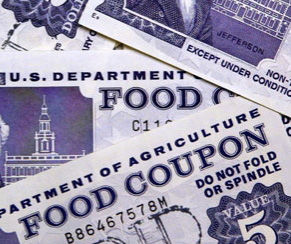
CNSNews.com – The number of Americans receiving subsidized food assistance from the federal government has risen to 101 million, representing roughly a third of the U.S. population.
The U.S. Department of Agriculture estimates that a total of 101,000,000 people currently participate in at least one of the 15 food programs offered by the agency, at a cost of $114 billion in fiscal year 2012.
That means the number of Americans receiving food assistance has surpassed the number of full-time private sector workers in the U.S.
According to the Bureau of Labor Statistics (BLS), there were 97,180,000 full-time private sector workers in 2012.
The population of the U.S. is 316.2 million people, meaning nearly a third of Americans receive food aid from the government.
Of the 101 million receiving food benefits, a record 47 million Americans participated in the Supplemental Nutrition Assistance Program (SNAP), commonly known as food stamps. The USDA describes SNAP as the “largest program in the domestic hunger safety net.”
The USDA says the number of Americans on food stamps is a “historically high figure that has risen with the economic downturn.”
SNAP has a monthly average of 46.7 million participants, or 22.5 million households. Food stamps alone had a budget of $88.6 billion in FY 2012.
The USDA also offers nutrition assistance for pregnant women, school children and seniors.
The National School Lunch program provides 32 million students with low-cost or no-cost meals daily; 10.6 million participate in the School Breakfast Program; and 8.9 million receive benefits from the Woman, Infants and Children (WIC) program each month, the latter designed for low-income pregnant, breastfeeding, and postpartum women, as well as children younger than 5 years old.
In addition, 3.3 million children at day care centers receive snacks through the Child and Adult Care Food Program.
There’s also a Special Milk Program for schools and a Summer Food Service Program, through which 2.3 million children received aid in July 2011 during summer vacation.
At farmer’s markets, 864,000 seniors receive benefits to purchase food and 1.9 million women and children use coupons from the program.
A “potential for overlap” exists with the many food programs offered by the USDA, allowing participants to have more than their daily food needs subsidized completely by the federal government.
According to a July 3 audit by the Inspector General, the USDA’s Food Nutrition Service (FNS) “may be duplicating its efforts by providing participants total benefits in excess of 100 percent of daily nutritional needs when households and/or individuals participate in more than one FNS program simultaneously.”
Food assistance programs are designed to be a “safety net,” the IG said.
“With the growing rate of food insecurity among U.S. households and significant pressures on the Federal budget, it is important to understand how food assistance programs complement one another as a safety net, and how services from these 15 individual programs may be inefficient, due to overlap and duplication,” the audit said.









